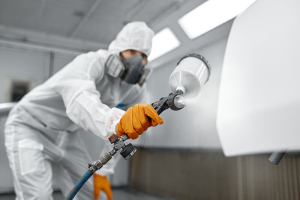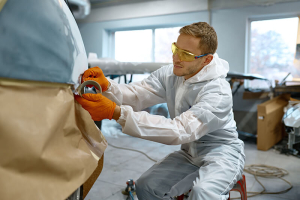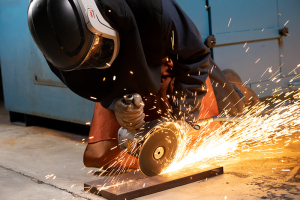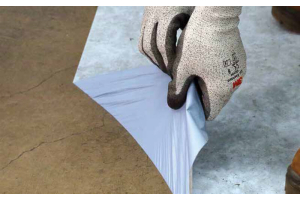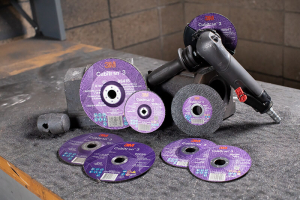How To Remove Rust On Steel And Prep For Paint
Removing Rust On Steel And Prepping For Paint
C.W. Hayden Co. How To Series
Hi, I'm Chris Hayden with C.W. Hayden Company.
We've been supplying marine and industrial manufacturers from our base in Auburn, Maine since 1948. Today, I'd like to show you how I like to prepare steel for paint. I've got a really nasty piece of angle iron here, and I got three of my favorite techniques for getting rust off and getting it prepped so we can get a coat of paint on there that's going to last.
Obviously, you can also do rip blasting and pickling or something like that, but for power tool scrubbing and abrading, this is how I like to proceed.
First of all, some PPE. I got cut and abrasive resistant gloves, safety glasses and a face shield. I also have a guard on my grinder.
So, what I have here is a 3M™ fiber disc that's 60 grits. I could have used a 36 grit or 40 or 50 or something coarser. But if I'm prepping for paint, and it's going to matter at all, then I like to go with something that's just a little bit finer so that I get a lot of cutting points per square inch to make it fairly quick, but also not really ragged and jagged.
So, without any more talking, let's just get to it.
*** grinding ***
I could see sparks flying. We're also getting through the corrosion pretty well, but there's still a fair bit of rust that's underneath there that's going to poke through afterwards. So, I'll follow up that with a Scotch-Brite™ product that I've got here. My next step is an extra course Scotch-Brite™ precision abrasive surface conditioning disc. I like to use these with the hook and loop back up pad with a hole cut out in the middle so that it'll actually center it really nicely.
These are great at removing rust that is below the level of the surface, that the fiber disc can cut off. I'll also take it down a little further to show you how it can remove the rust all by itself.
*** grinding ***
It looks like it wasn't quite centered, we got a few sparks off the guard, it might be a little dented.
That did remove most of the rust. It did remove the mill scale like the fiber disc as well. But if you're not worried about mill scale, if you're just trying to get a coat of paint on there. That's a good way to go.
The last step that I'd like to go with is a flap disc. I know they're very popular in the marketplace. Personally, I don't care for them that much. They tend to grind really aggressively when they're brand new because the abrasive is all nice and sharp and the edges are nice and crisp. But as you wear down through it and the cloth gets exposed, it tends to slow it down a lot and then it's kind of rubbing across the surface.
The other problem with the flap disc, much like a hard grinding wheel, is when you wear it out on the corner, you lose your accuracy and you struggle to find where the center of your cut is. Okay, so I've adapted this over so I can run a flap disc. Let's give it a try.
*** grinding ***
As you can see, it cut really aggressively at first but after the first one inch of cutting, it started to slow down a lot. And I had to push a lot further and really lay into it to get it to keep cutting. And then it started to grab and pull and tear so your accuracy drops off with these flap discs pretty quickly. That's why I still prefer fiber discs because they are a lot smoother cutting and they also last a lot longer than flap discs.
These were all 60 grit finishes that we've putting on here, and that's usually adequate for an industrial kind of coating that can be put on top when appearance isn't so much of an issue which is what you typically see on a piece of channel steel like this.
I hope you like the video. We have a lot more on our website. Check us out sometime at CW Hayden Online dot com. Thanks for watching.






